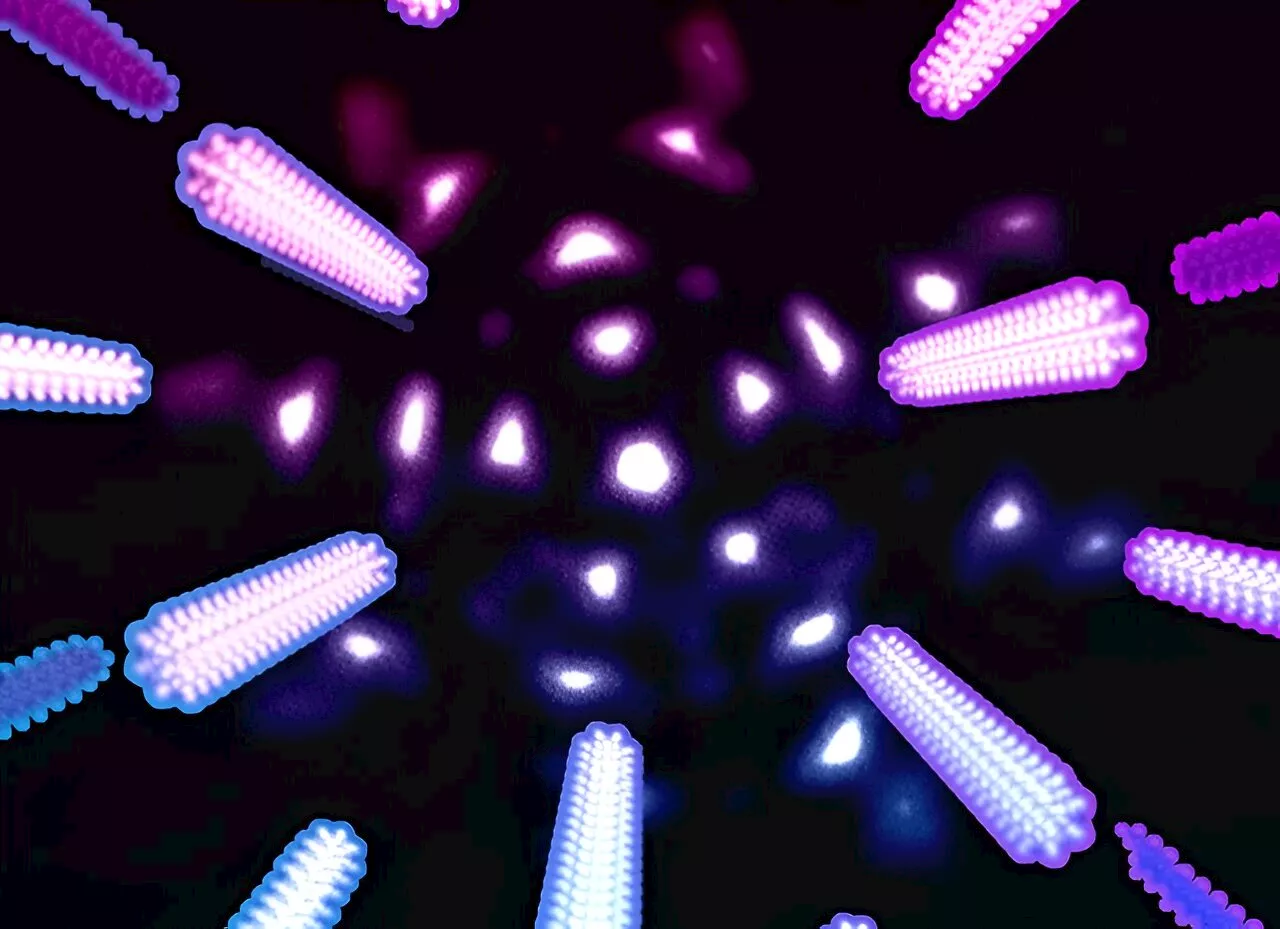Researchers have discovered the unique nanostructures responsible for the electric blue spots of the bluespotted ribbontail ray (Taeniura lymma), with possible applications for developing chemical-free coloration. The team is also conducting ongoing research into the equally enigmatic blue coloration of the blue shark (Prionace glauca).
A new blue: Mysterious origin of the ribbontail ray's electric blue spots revealed retrieved 4 July 2024 from https://phys.org/news/2024-07-blue-mysterious-ribbontail-ray-electric.html
This document is subject to copyright. Apart from any fair dealing for the purpose of private study or research, no part may be reproduced without the written permission. The content is provided for information purposes only.Use this form if you have come across a typo, inaccuracy or would like to send an edit request for the content on this page. For general inquiries, please use ourThank you for taking time to provide your feedback to the editors.
Your feedback is important to us. However, we do not guarantee individual replies due to the high volume of messages.to let the recipient know who sent the email. Neither your address nor the recipient's address will be used for any other purpose. The information you enter will appear in your e-mail message and is not retained by Phys.org in any form.Get weekly and/or daily updates delivered to your inbox.
Physics News Science News Technology News Physics Materials Nanotech Technology Science
United States Latest News, United States Headlines
Similar News:You can also read news stories similar to this one that we have collected from other news sources.
 Researchers discover mysterious mini-NeptunesResearchers discovered mini-Neptunes around four red dwarfs using observations from a global network of ground-based telescopes and the TESS space telescope. These four mini-Neptunes are close to their parent stars, and the three of them are likely to be in eccentric orbits.
Researchers discover mysterious mini-NeptunesResearchers discovered mini-Neptunes around four red dwarfs using observations from a global network of ground-based telescopes and the TESS space telescope. These four mini-Neptunes are close to their parent stars, and the three of them are likely to be in eccentric orbits.
Read more »
 Researchers develop technology to mass produce quantum dot lasers for optical communicationsSouth Korean researchers have successfully developed technology to mass-produce quantum dot lasers, widely used in data centers and quantum communications. This breakthrough paves the way for reducing the production cost of semiconductor lasers to one-sixth of the current cost.
Researchers develop technology to mass produce quantum dot lasers for optical communicationsSouth Korean researchers have successfully developed technology to mass-produce quantum dot lasers, widely used in data centers and quantum communications. This breakthrough paves the way for reducing the production cost of semiconductor lasers to one-sixth of the current cost.
Read more »
 Researchers develop AI technology to predict yield strength of metalsA research team has developed an optimal artificial intelligence model to predict the yield strength of various metals, effectively addressing traditional cost and time limitations. This research has been published in the online edition of Acta Materialia.
Researchers develop AI technology to predict yield strength of metalsA research team has developed an optimal artificial intelligence model to predict the yield strength of various metals, effectively addressing traditional cost and time limitations. This research has been published in the online edition of Acta Materialia.
Read more »
 Researchers develop novel atom-thin material heat testAdvanced materials, including two-dimensional or 'atomically thin' materials just a few atoms thick, are essential for the future of microelectronics technology. Now a team at Los Alamos National Laboratory has developed a way to directly measure such materials' thermal expansion coefficient, the rate at which the material expands as it heats.
Researchers develop novel atom-thin material heat testAdvanced materials, including two-dimensional or 'atomically thin' materials just a few atoms thick, are essential for the future of microelectronics technology. Now a team at Los Alamos National Laboratory has developed a way to directly measure such materials' thermal expansion coefficient, the rate at which the material expands as it heats.
Read more »
 South African researchers test use of nuclear technology to curb rhino poachingResearchers in South Africa have injected radioactive material into the horns of 20 rhinos as part of a research project aimed at reducing poaching.
South African researchers test use of nuclear technology to curb rhino poachingResearchers in South Africa have injected radioactive material into the horns of 20 rhinos as part of a research project aimed at reducing poaching.
Read more »
 How Researchers Live and Work Onboard an Icebreaker in a West Antarctic SeaGet a behind-the-scenes look at how researchers live and work on a U.S. icebreaker making its way through the waters of West Antarctica.
How Researchers Live and Work Onboard an Icebreaker in a West Antarctic SeaGet a behind-the-scenes look at how researchers live and work on a U.S. icebreaker making its way through the waters of West Antarctica.
Read more »
